Abstract
The role of phagocytosed antigen in the production of antibody to bacteriophage T4 has been studied. The ability of mice to give an antibody response to this antigen was first impaired either by splenectomy or by X-irradiation, and then restored by injection of syngeneic lymphoid cells given at various times relative to the injection of T4. In splenectomized animals administration of lymphoid cells had only a marginal effect on the severely depressed response to T4. It was concluded that the presence of an intact spleen is essential to the development of the normal immune response, and that circulating immunocompetent cells are unable to respond to circulating antigen or to antigen sequestered within the liver. On the other hand, in irradiated mice, there was a faster and more complete restoration of the anti-T4 response, confirming the ability of antigen localized within the spleen to stimulate competent cells. It was also found that the immunogenicity of T4 within this organ was not lost at a rate which corresponded to its gross breakdown but persisted without decrease for at least 48 hr. A similar observation was made for sheep red blood cells when this antigen was used in conjunction with T4.
Full text
PDF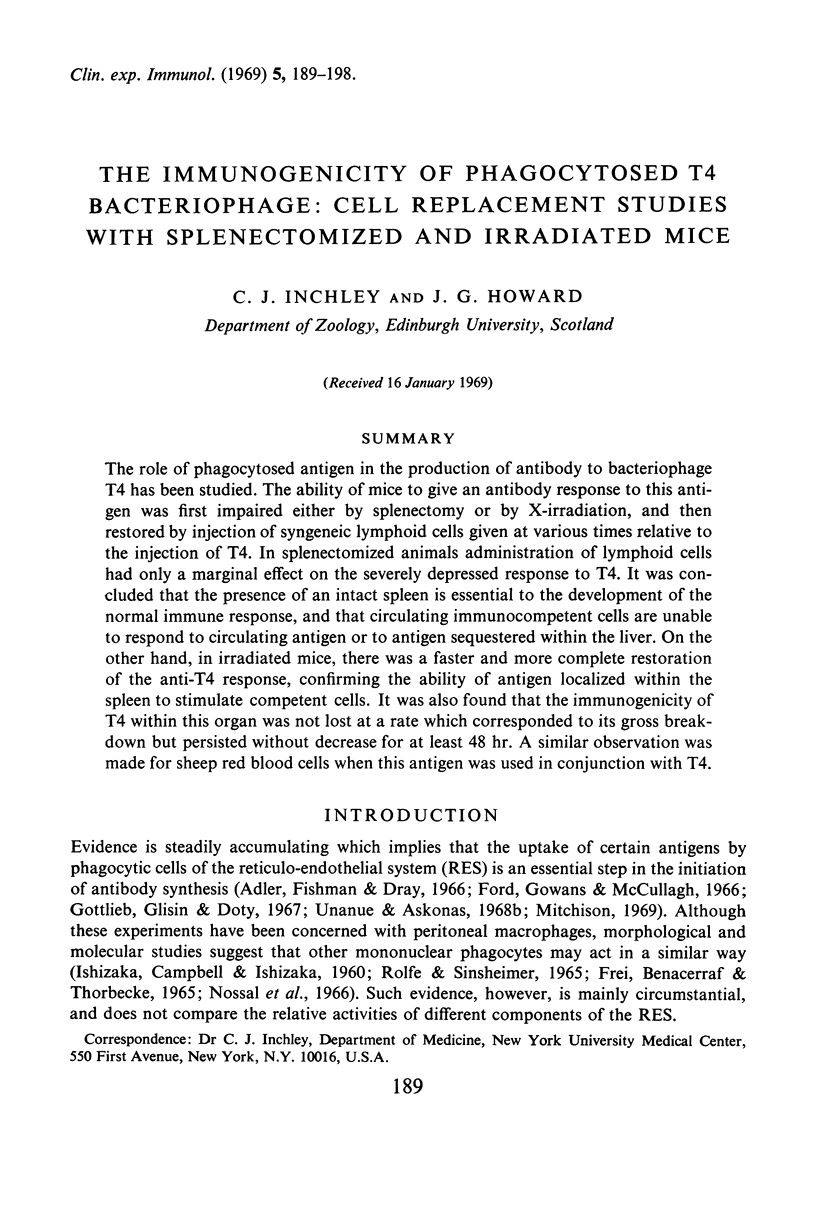
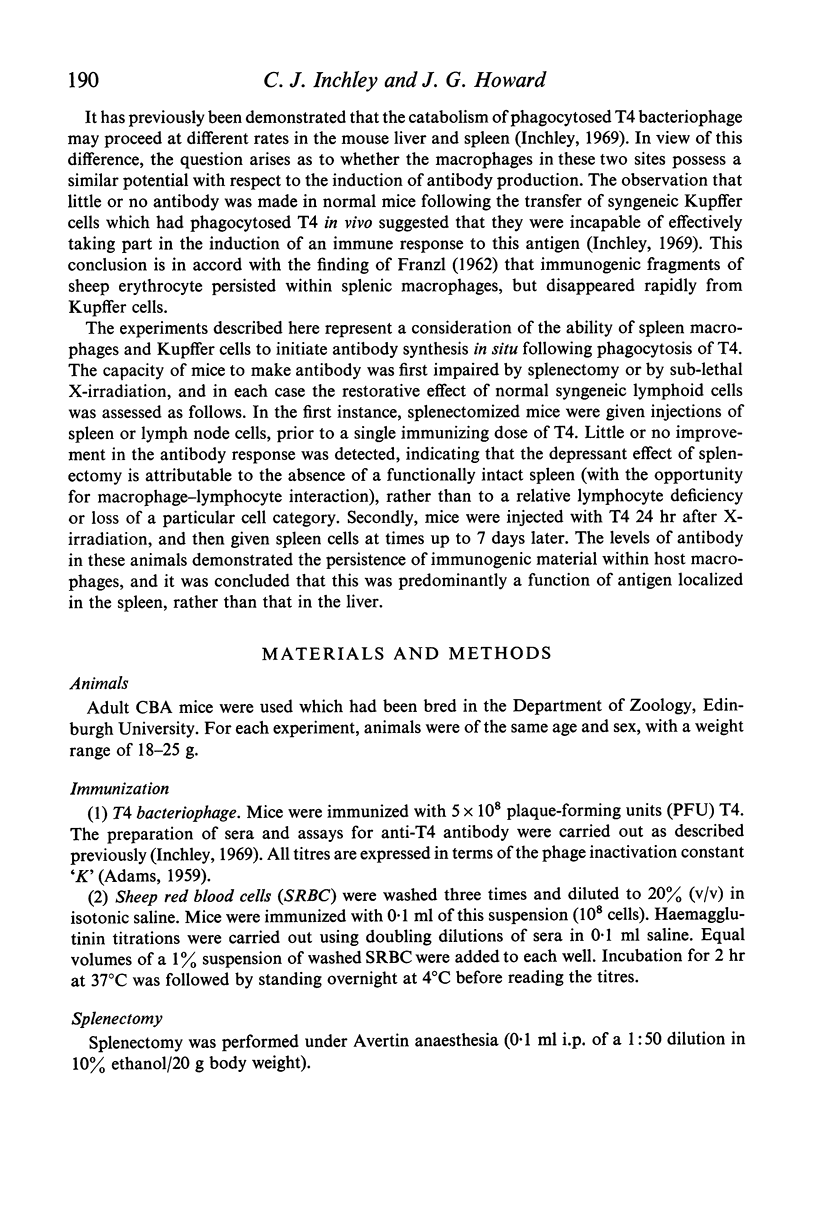

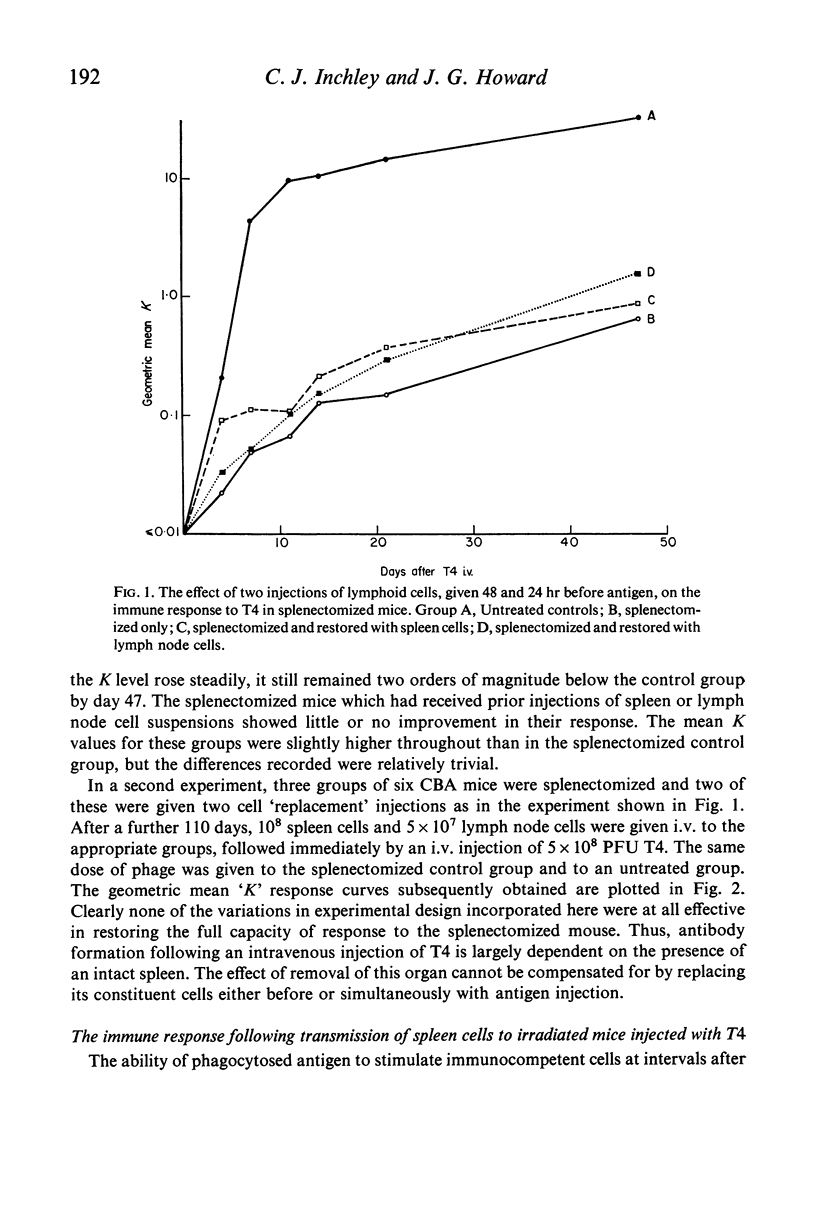
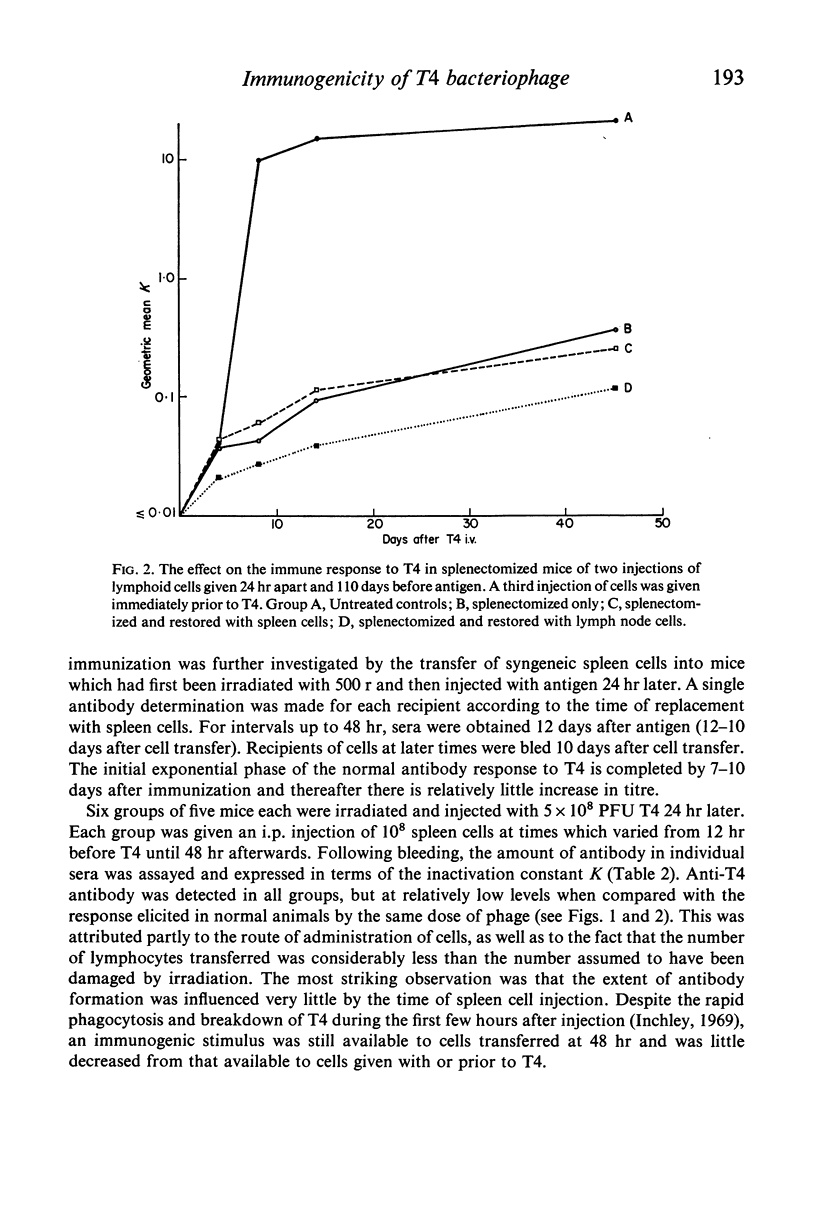

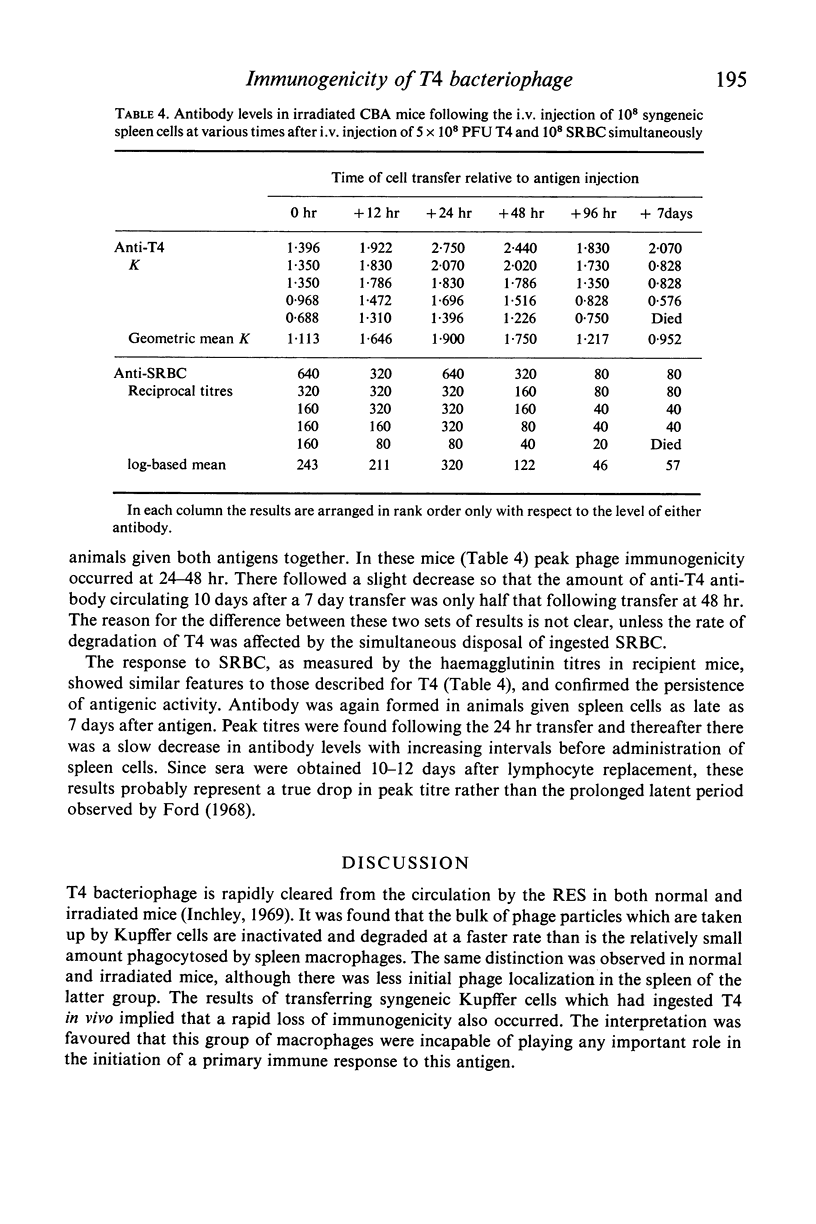

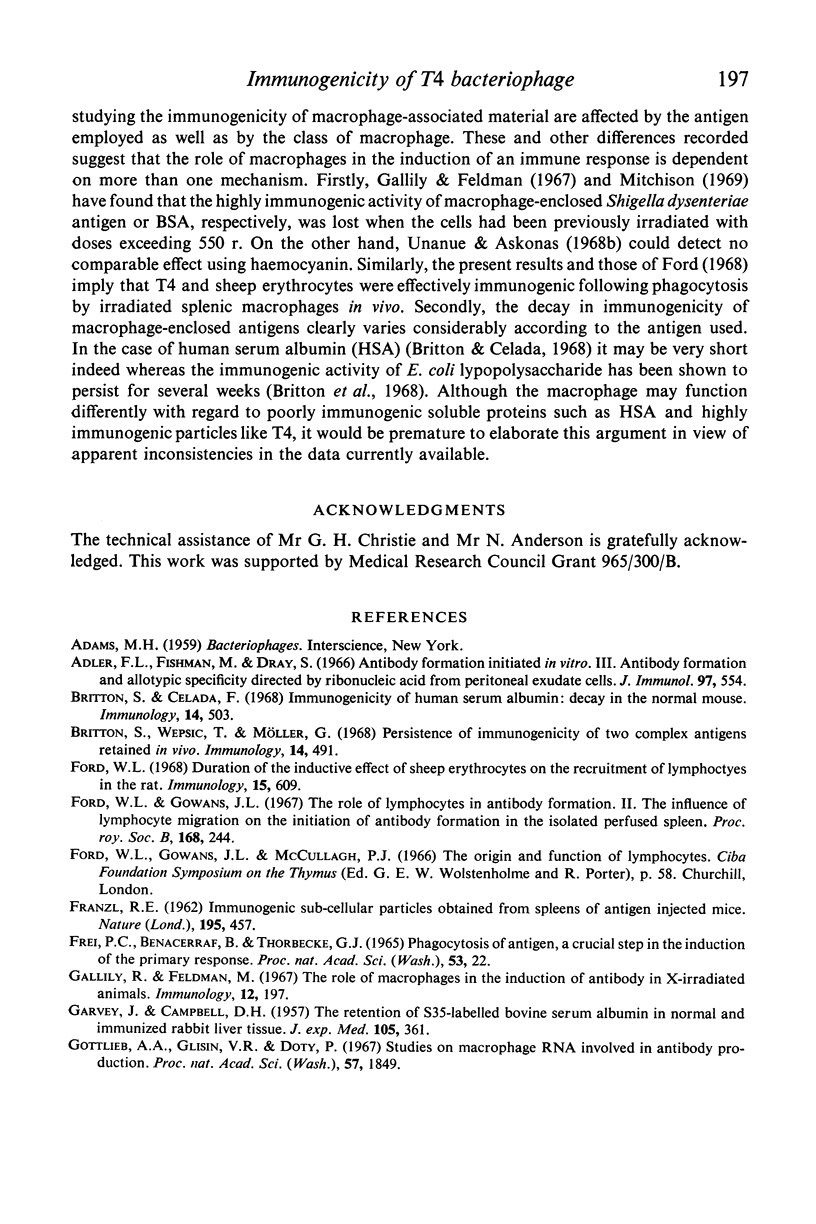
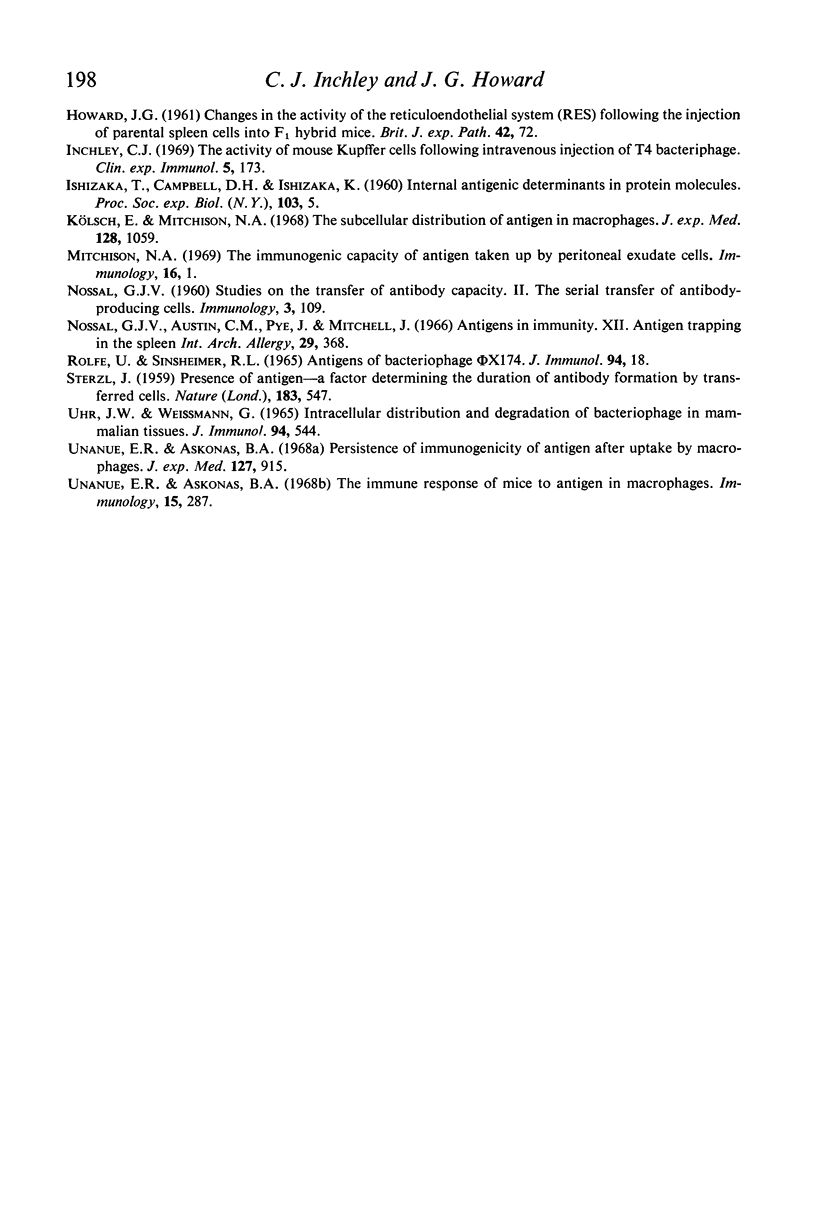
Selected References
These references are in PubMed. This may not be the complete list of references from this article.
- Adler F. L., Fishman M., Dray S. Antibody formation initiated in vitro. 3. Antibody formation and allotypic specificity directed by ribonucleic acid from peritoneal exudate cells. J Immunol. 1966 Oct;97(4):554–558. [PubMed] [Google Scholar]
- Britton S., Celada F. Immunogenicity of human serum albumin: decay in the normal mouse. Immunology. 1968 Apr;14(4):503–509. [PMC free article] [PubMed] [Google Scholar]
- Britton S., Wepsic T., Möller G. Persistence of immunogenicity of two complex antigens retained in vivo. Immunology. 1968 Apr;14(4):491–501. [PMC free article] [PubMed] [Google Scholar]
- FRANZL R. E. Immunogenic sub-cellular particles obtained from spleens of antigen-injected mice. Nature. 1962 Aug 4;195:457–458. doi: 10.1038/195457a0. [DOI] [PubMed] [Google Scholar]
- Ford W. L. Duration of the inductive effect of sheep erythrocytes on the recruitment of lymphocytes in the rat. Immunology. 1968 Oct;15(4):609–617. [PMC free article] [PubMed] [Google Scholar]
- Ford W. L., Gowans J. L. The role of lymphocytes in antibody formation. II. The influence of lymphocyte migration on the initiation of antibody formation in the isolated, perfused spleen. Proc R Soc Lond B Biol Sci. 1967 Sep 12;168(1012):244–262. doi: 10.1098/rspb.1967.0064. [DOI] [PubMed] [Google Scholar]
- GARVEY J. S., CAMPBELL D. H. The retention of S35-labelled bovine serum albumin in normal and immunized rabbit liver tissue. J Exp Med. 1957 Apr 1;105(4):361–372. doi: 10.1084/jem.105.4.361. [DOI] [PMC free article] [PubMed] [Google Scholar]
- Gallily R., Feldman M. The role of macrophages in the induction of antibody in x-irradiated animals. Immunology. 1967 Feb;12(2):197–206. [PMC free article] [PubMed] [Google Scholar]
- Gottlieb A. A., Glisin V. R., Doty P. Studies on macrophage RNA involved in antibody production. Proc Natl Acad Sci U S A. 1967 Jun;57(6):1849–1856. doi: 10.1073/pnas.57.6.1849. [DOI] [PMC free article] [PubMed] [Google Scholar]
- HOWARD J. Changes in the activity of the reticulo-endothelial system (RES) following the injection of parental spleen cells into F1 hybrid mice. Br J Exp Pathol. 1961 Feb;42:72–82. [PMC free article] [PubMed] [Google Scholar]
- Inchley C. J. The actvity of mouse Kupffer cells following intravenous injection of T4 bacteriophage. Clin Exp Immunol. 1969 Jul;5(1):173–187. [PMC free article] [PubMed] [Google Scholar]
- Kölsch E., Mitchison N. A. The subcellular distribution of antigen in macrophages. J Exp Med. 1968 Nov 1;128(5):1059–1079. doi: 10.1084/jem.128.5.1059. [DOI] [PMC free article] [PubMed] [Google Scholar]
- Mitchison N. A. The immunogenic capacity of antigen taken up by peritoneal exudate cells. Immunology. 1969 Jan;16(1):1–14. [PMC free article] [PubMed] [Google Scholar]
- NOSSAL G. J. Studies on the transfer of antibody-producing capacty. II. The serial transfer of antibody-producing cells. Immunology. 1960 Apr;3:109–116. [PMC free article] [PubMed] [Google Scholar]
- Nossal G. J., Austin C. M., Pye J., Mitchell J. Antigens in immunity. XII. Antigen trapping in the spleen. Int Arch Allergy Appl Immunol. 1966;29(4):368–383. [PubMed] [Google Scholar]
- ROLFE U., SINSHEIMER R. L. ANTIGENS OF BACTERIOPHAGE PHI-X174. J Immunol. 1965 Jan;94:18–21. [PubMed] [Google Scholar]
- STERZL J. Presence of antigen; a factor determining the duration of antibody formation by transferred cells. Nature. 1959 Feb 21;183(4660):547–548. doi: 10.1038/183547a0. [DOI] [PubMed] [Google Scholar]
- UHR J. W., WEISSMAN G. INTRACELLULAR DISTRIBUTION AND DEGRADATION OF BACTERIOPHAGE IN MAMMALIAN TISSUES. J Immunol. 1965 Apr;94:544–550. [PubMed] [Google Scholar]
- Unanue E. R., Askonas B. A. Persistence of immunogenicity of antigen after uptake by macrophages. J Exp Med. 1968 May 1;127(5):915–926. doi: 10.1084/jem.127.5.915. [DOI] [PMC free article] [PubMed] [Google Scholar]
- Unanue E. R., Askonas B. A. The immune response of mice to antigen in macrophages. Immunology. 1968 Aug;15(2):287–296. [PMC free article] [PubMed] [Google Scholar]


